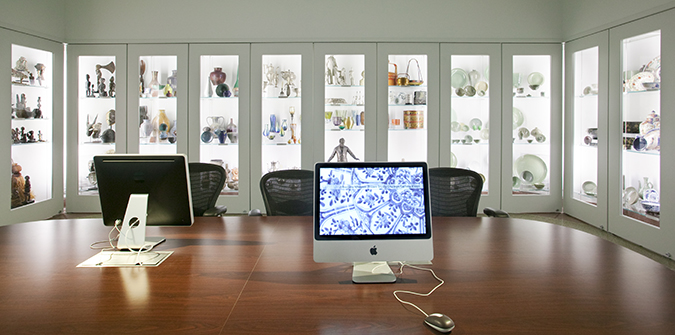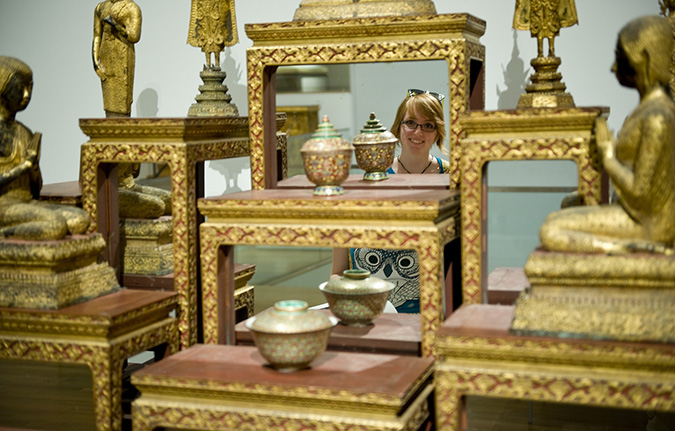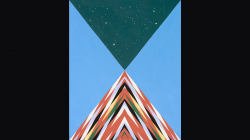Second Floor

Robert and Lillian Montalto Bohlen Gallery
African art from a range of regions and traditions is on view in this light-filled oasis in the new Frankel Wing, with particular strength in work from Central Africa. Anchored by a nearly life-sized maternity figure from the Urhobo people, the gallery installation explores the question of how what were originally made as ritual objects function within the context of a modern-day museum.

A. Alfred Taubman Gallery II
Learn more about Abstraction, Color, and Politics in the Early 1970s here.

Thomas H. and Polly W. Bredt Gallery
Stroll the second floor balcony gallery overlooking the Lizzie and Jonathan Tisch Apse and take in a pleasing procession of some of the Museum’s most beloved and iconic works, including Claude Monet’s La Débacle (The Breakup of the Ice), James McNeill Whistler’s Sea and Rain, and Spring Landscape by Arthur Wesley Dow. Natural light returns to the heart of the Museum for the first time in over half a century through the reopened and restored skylights.

A. Alfred Taubman Gallery
The Museum's soaring, and at over 5,000 square feet its most spacious, special exhibition space.

UMMA’s Japanese collection has notable strengths in painting and ceramics of the early modern era. A highlight of this gallery is the life-size Vairocana Buddha (sometimes called the primordial or supreme Buddha), which dates to the 17th century. There is also a set of armor from the Daimyo period, a collection of both traditional ceramics and delicately glazed modern interpretations of these traditional techniques, and other delights.

The Albertine Monroe-Brown Study-Storage Gallery
Visible or “open” art storage galleries are located on the second floor of Alumni Memorial Hall, in the Albertine Monroe-Brown Study-Storage Gallery, and in the Education Center on the lower level of the new Frankel Wing, adjacent to the Helmut Stern Auditorium. Designed to give visitors visual access to hundreds of objects in close proximity, the Open Storage Galleries reveal the wide range of UMMA’s collections of nearly 19,000 objects. Nearly one thousand objects from the collections are presented in secure, well-lit, glass-fronted cabinets—providing ample opportunity for close viewing and visual comparison, as well as the thrill of slipping behind the scenes into a private treasure house of art. Areas of special depth on view in the Open Storage Galleries include Chinese and Korean ceramics, Chinese snuff bottles and netsuke, Indian bronzes, Arts and Crafts ceramics, and art glass by Louis Comfort Tiffany.

Eleanor Noyes Crumpacker Gallery
This special exhibitions gallery rotates often.

A marble column from a Jain temple in northwest India sitting beside a sculpture of the Hindu god Ganesh speak to the range of cultures presented in the South and Southeast Asian Gallery. Don’t miss the Rajasthani miniatures, or the graceful and athletic Hindu gods and goddesses in bronze and stone.

